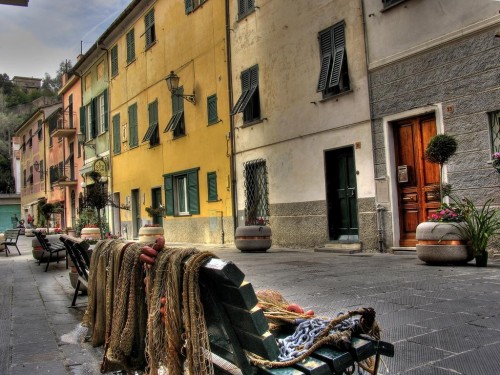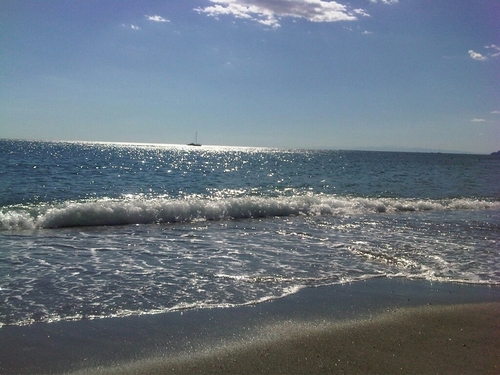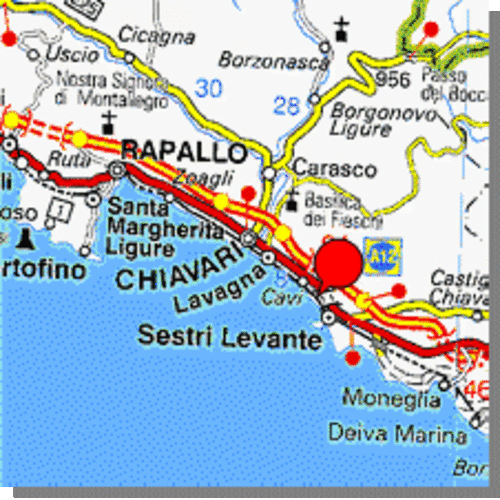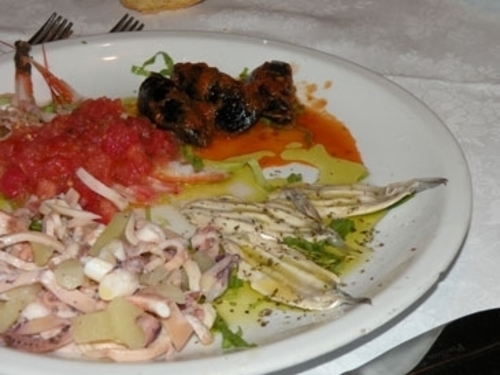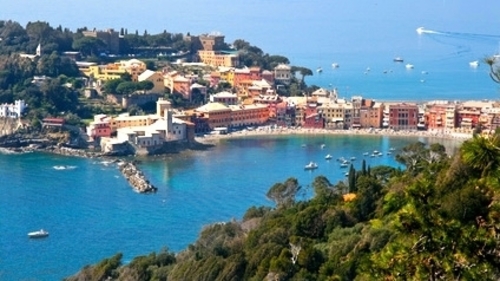It is less peasant than the one of the extreme east promontory, for its ingredients, influenced a bit by Occitan tastes, the cuisine in Lavagna is based on two foundations of slow food: the seasons and the territory. From the daily catch to the fresh products of the inland, such as asparagus, artichokes, pumpkins and the spontaneous courgettes, the quarantina potatoes and the herbs of the season, thyme and borage above all, wine and food well meet all tastes. You may taste sea food already shelled on the fishing boats of Cavi, or San Stè’ cheese and the chestnut flour up on the hills. From the olives of Deiva Marina to the well known basil, used to make pesto sauce, that the whole Liguria produces in abudance, in Lavagna there are many additions that help the risult of wine and food experience passed on by generations. Bagnum with anchovies, with fresh tomato, garlic, parsley, white wine is the fish dish of the area par excellence, it is a sort of sauce enhanced by natural scents and served hot on bread crackers. An admirable example of a cuisine that has a lasting bond with the sea, is cappon magro, a fish starter laid on boiled vegetables, another dish which is usually made the days before Easter, is the whitebait omelette, the mackerels with peas sauce, the stockfish, stewed or served with cornmeal mush, garnished with pine seeds and olives, or burrida, zimino with stewed fish or meat served with chards or spinach, risotto with octopuss, roasted gilthead bream. Also soups and minestrone a happy sharing between the fruits of the land are unmissable on the tables in Lavagna, the king of the main course is the minestrone, a vegetable soup with its soft taste of vegetables, enriched by borlotti beans and "good" olive oil from the Riviera; legumes soup, called mesciua; tocco, the thick sauce made with mushrooms, stew made with tripe and served with broth. The plentiful mushrooms which can be found on the hills, are offered in the most varied ways, in the pan served with potatoes, with a sprinkle of garlic and basil, "alla Genovese" that is according to a Genoese recipe, cooked on the embers, fried or stuffed. Fried black salsify and courgette flowers stuffed with potatoes open the list to the true main dishes. They are easy to prepare but there is a secret, well kept by the housewives that adds more taste, we start with stuffed cabbage, known as gagette, inside the dough there are eggs, majoram, onion, grana cheese and just a bit of butter, olive oil and salt, ready to be put inside the rolled dough to make delicious pastry pockets. We can find tripe "accomodata", cooked with onions, pine seeds, butter, tomatoes, potatoes and olive oil, it is a very tasty stew to be eaten with bread or cornmeal mush with black cabbage is excellent in the winter. Testatoroli are a sort of thin crepes, very typical in the east Liguria, made with white flour, water and salt, it is a versatile dish that can be eaten with pesto sauce, waltnut sauce, olive oil and grana cheese, they are usually served cut in a diamond shape, testaroli are not to be confused with the thick panigacci, excellent to eat with salami of the region. A complete dish is farinata, adopted by Tuscany it is a dish made with chickpea flour, cooked in a thin copper baking tray called "testo", essential for its use inside the wood burning oven, this makes farinata crispy, tasty and hot. Castagnaccio or panella is a small autumn pie made with a dough of chestnut flour, pine seeds, sultana, olive oil and salt, it is a complete dish for its taste, it is half way between a dessert and anything thay goes with bread. Something salty is the rice pie, with its soft pastry, it is a rustic dish with a strong taste, made with eggs mixed with parmigiano cheese, olive oil, salt, pepper and grated nutmeg, it is served warm or it can be a tasty snack for your excursions. We can describe cima as the most emblematic Genoese dish, it is a sort of roast veal stuffed with the ingredients that farmers, once poor, put together from leftovers and few vegetables such as peas, pine seeds, cheese, it closed with thread and needle in the shape of a pocket, Once cooked, the traditional cima has to cool, well wrapped and pressed by two weights. To finish your meal, pandolce genoese is the right choise for the festivities, in the two versions, the flat one or the tall one, it is a sort of sweet and soft bread, with a circle shape, it is prepared using starter, eggs, raisins and pine seeds. The legend tells that a slice of the cake must be kept for the poor and another one for Saint Biagio's day, which is the 3rd of February. Canestrelli are excellent crumbly biscuits that tasteof butter, they are known throughtout Liguria, another dessert is latte dolce, sweet milk which is made boiling milk with flour and the skin of a lemon, then the dough must be fried, it can be served withicing sugar on top. The local wine producers will be happy to invite you to taste their creations, among the typical products there is a delicious white wine that comes from the hills of Santa Giulia, other wines are Bianchetta, Vermentino, but also passiti and moscati Golfo del Tigullio well defend their reputation, not to be missed the white wine Terre di Portofino and Ciliegiolo, they are appreciated with main dishes and minestrone.
